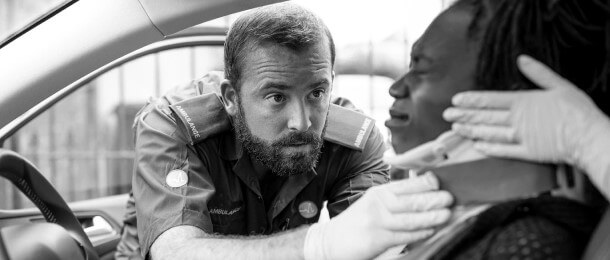News: 3 firefighters hospitalized after Hwy 47 crash in Uxbridge
UXBRIDGE, ON – Three firefighters were sent to a hospital after a crash on Highway 47 in Uxbridge on Monday,...
Slip and fall accidents are among the most common personal injury claims in Ontario. Whether it is from a patch of ice outside a business or poorly maintained public sidewalk, fall accidents can cause serious physical harm and financial loss. However, the legal landscape surrounding these incidents varies significantly depending on where the fall occurred, private property, or public property. Understanding the key differences can help injured individuals make informed decisions when seeking compensation.
Private property includes residential homes, businesses, rental units, apartment complexes, and commercial premises. In contrast, public property is generally owned and maintained by municipalities or government entities. Examples of public property includes sidewalks, roads, and city parks. When it comes to slip and fall accidents, liability depends on who owns or controls the property and the duty of care owed to the injured individuals.
In Ontario, the Occupiers’ Liability Act governs slip and fall cases on private property. The Act places a duty on property owners and occupiers (anyone over a premises, including tenants and managers) to ensure the property is reasonably safe for visitors.
This includes:
If you’ve been injured in a slip and fall accident on private property due to a property owner’s negligence, you may be eligible to file a personal injury claim to seek fair compensation for medical bills, lost wages, and other damages.
Under the Occupiers’ Liability Act, if your fall accident involved snow or ice, you must provide written notice within 60 days of the incident. This notice must be served on:
Failing to meet the notice period can jeopardize your ability to file a claim. Always gather witness information and contact a personal injury lawyer as soon as possible after the incident.
Slip and fall accidents on public property fall under the Municipal Act, which sets a higher standard for proving liability. In most cases, the injured party must prove that the municipality acted with gross negligence, a more serious form of neglect than simple carelessness.
This means the municipality must have shown a reckless disregard for public safety, such as ignoring a known hazard or failing to conduct routine maintenance despite complaints.
Claims involving fall accidents in Ontario on public property require written notice within 10 days of the incident. This notice must be:
The notice should include the date, time, and the location of the incident, a brief description of what happened, and your contact details. Missing the deadline can severely impact your ability to pursue a claim.
Liability in slip and fall claims is determined by examined who owned a duty of care, whether that duty was breached, and whether the breach directly caused the injury.
In private property cases, liability is based on the Occupiers’ Liability Act, which requires property owners and occupiers to take reasonable steps to maintain safe premises.
In public property cases, the court will assess whether the municipality failed to meet its duties under the Municipal Act and whether its failure amounted to gross negligence.
Ontario law recognizes the concept of contributory negligence, which means that if you were partially responsible for your fall (e.g., wearing inappropriate footwear or ignoring posted warnings), your compensation may be reduced.
For instance, if you were found to be 20% at fault, you would receive 80% of the compensation. This underscores the importance of documenting everything and working with a slip and fall lawyer who can help you navigate the legal process.
Ownership: Individuals, businesses, or corporations
Governing Law: Occupiers’ Liability Act
Standard of Proof: Negligence
Notice Period: 60 days
Examples: Homes, apartments buildings, stores
Proof Requirements: Reasonable steps not taken to maintain safe premises
Ownership: Municipality or government
Governing Law: Municipal Act
Standard of Proof: Gross negligence
Notice Period: 10 days
Examples: Sidewalks, roads, public parks
Proof Requirements: Municipality acted with reckless disregard for public safety
Whether your slip and fall occurred on private property or public property, the legal landscape can be complex and demanding. Deadlines for notice periods, the burden of proving liability, and dealing with insurance companies can be overwhelming without guidance.
A skilled personal injury lawyer can:
Most personal injury firms, including Grillo Law, offer a free consultation. If you or a loved one have been injured in a slip and fall, don’t hesitate, reach out to one of our trusted and skilled personal injury lawyers to ensure your rights are protected and deadlines are met.

Blog
UXBRIDGE, ON – Three firefighters were sent to a hospital after a crash on Highway 47 in Uxbridge on Monday,...
HAMILTON, ON – A crossing guard was killed in a crash involving a trash truck in the Hill Park area...
BRAMPTON, ON – A man was left in critical condition as a result of a pedestrian crash that happened along...

Request a free consultation!
Call us today for a FREE consultation regarding your accident benefits claim.
Call: +1 855-225-5725
You will not pay any fees
until your case is won or settled
REQUEST A FREE CONSULTATION!
You will not pay any fees until your case is won or settled.
Thank you!
Amet minim mollit non deserunt ullamco est sit aliqua dolor do amet sint. Velit officia consequat duis enim velit mollit.